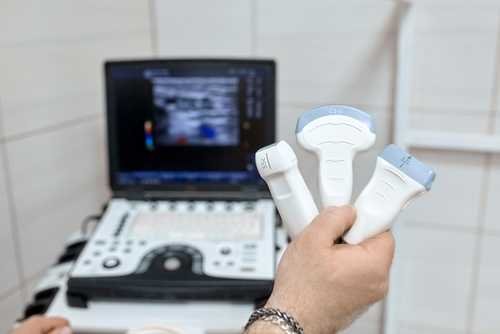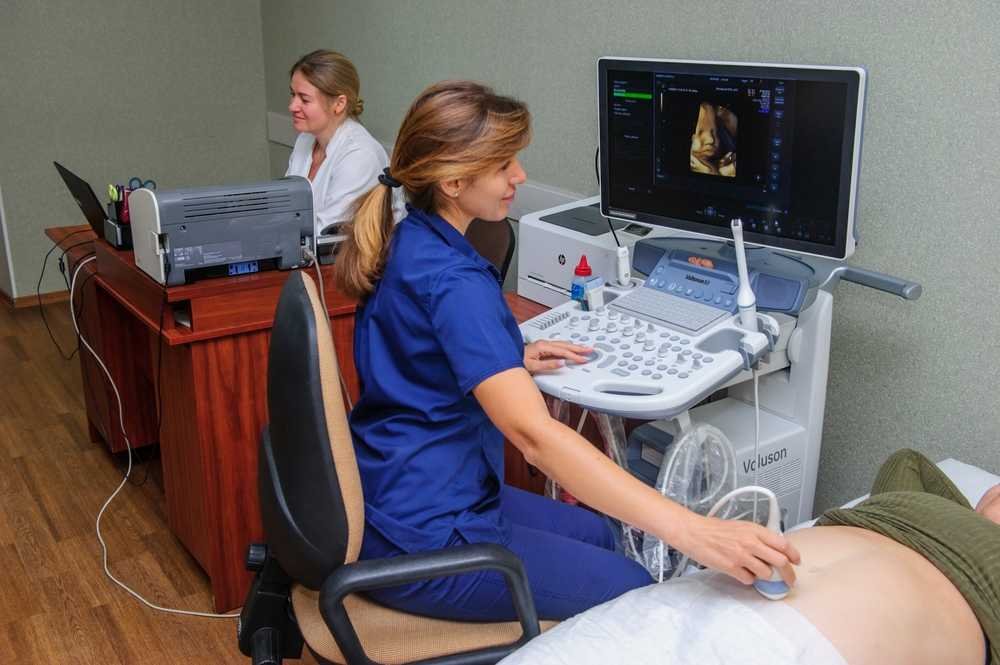Portable ultrasound machines have revolutionized medical diagnostics, offering numerous advantages over traditional, stationary systems. From increased accessibility and convenience to enhanced diagnostic capabilities in remote and emergency settings, these compact devices are transforming the healthcare landscape. Here, we delve into the key benefits of using portable ultrasound machines.
Just over 30% of ultrasound unit failures are due to software, and just over 40% are related to hardware issues. Overall, the biggest fault of any ultrasound (US) machine is the issues with the probe/transducer used by the machine.
Probe-cable compatibility and connectivity issues are the most common problems associated with ultrasound machines. While these problems aren’t always foreseeable, the type of portable ultrasound machine, its features, and the coverage you have for it are.
Practices want a simple yet reliable way to choose a portable ultrasound machine. With advancements in technology, from contrast-enhanced imaging and workflow automation to AI, the market is flooded with options, making it challenging to select the best option for your practice.
US scans are among the top three most-used modalities, and while these machines are highly used, it is possible to choose the wrong type.
What Is a Portable Ultrasound Machine, and What Are Its Benefits?
Portable ultrasound machines, also known as point-of-care ultrasounds (POCUS), offer many benefits. These compact and lightweight devices use high-frequency sound waves to produce real-time images, revolutionizing how providers work and improving patient care.
When considering a portable ultrasound machine, whether for home use or a clinic setting, it’s important to remember its potential. These machines are ideal for emergencies, provide better mobility for travel, and, most importantly, offer the ability to achieve faster and more accurate diagnosis, empowering healthcare professionals in their practice.
10 Key Factors to Consider When Buying a Portable Ultrasound Machine
 Finding the best portable ultrasound machine for your practice depends on your specialty. After outlining why you need the machine, you can narrow your search by considering ten key factors.
Finding the best portable ultrasound machine for your practice depends on your specialty. After outlining why you need the machine, you can narrow your search by considering ten key factors.
1. The Diagnostic Uses Intended for the Machine
Practices should know how they intend to use the machine. Use cases can range from the types of ultrasounds that will be performed to the most severe pathologies within the practice.
Whether trying to identify masses, conduct fetal assessments, detect cases of effusion, or wanting to prioritize musculoskeletal practices, different uses could require a different probe or unit capabilities.
2. The Workflows You Currently Have or Hope To Have
Most US machines today will come with workflow automation, while some won’t. This is something to consider if you’re debating on purchasing an older model. Practices often look for this type of feature since it allows providers to automate different levels of an exam through exam automation software.
While the exams available for automation will range between different systems, AI-based features could save physicians at least an hour per day in administrative processes.
3. What Probes/Transducers Are Needed

The probes you use must be specific to the type of imaging you need to produce. For example, cardiac imaging and transvaginal exams will require different probes.
If you have a cardiac clinic, echocardiograms are the primary type of imaging you will produce. An array probe is required due to its capability to produce highly detailed images from the heart through the entire rib cage. With the heart’s long axis, an array probe is the most appropriate option for assessing the heart.
When considering other specialties, there are probes designed for a specific purpose. The probe used for transvaginal imaging, for example, is specifically designed for insertion into the vaginal canal. It offers high-frequency imaging and provides closer proximity to multiple structures, which is why this probe allows for imaging with superior resolution and clarity.
If your practice needs to produce abdominal imaging, you will notice that low-frequency curvilinear transducers are primarily used for these exams. This is due to the broader field of view and the deeper penetration needed for the exam.
What Probes/Transducers Are Needed for OB GYN?
In obstetrics and gynecology (OB/GYN), selecting the appropriate ultrasound probes (transducers) is crucial for accurate and adequate imaging. These probes vary in design, frequency, and application, each serving specific diagnostic purposes in OB/GYN care.
Types of Ultrasound Probes for OB/GYN
- Convex (Curvilinear) Probe
- Endocavitary (Transvaginal) Probe
- Linear Probe
- 3D/4D Probes
4. The Transducer Frequency Range
An ultrasound machine’s transducer determines how deep the US waves can penetrate a patient’s tissue.
The number of US waves emitted per second directly influences image clarity. Because of this, all practices should prioritize units that offer frequencies between 2.5 MHz and 5 MHz or up to 8 MHz for better observation capabilities.
5. The Budget Allocated for the Machine
The initial investment of even the best handheld ultrasound in 2025 can run between $5,000 and $100,000. The price gap is so wide due to the variety of factors that influence the price of a portable ultrasound unit.
Providers should consider the cost of ownership and not the shelf price alone. For example, when discussing how to choose a portable ultrasound machine, remember that maintenance alone will often cost 10% to 15% of the entire purchase price of the unit.
6. After-Sales Warranty and Needed Available Support
On average, you should expect the lifespan of an ultrasound device to last up to 9 years in a variety of cases, although you should be prepared to replace it a few years sooner. This is why replacing your ultrasound machine every 5 to 7 years is recommended to avoid the chance of complete machine failure and not having a replacement or alternative onsite.
The initial price of a portable ultrasound will significantly vary, and ultimately, what you pay will be based on two primary factors: whether you’re buying new or used and the type of imaging you need to produce. While the initial investment isn’t something that can be manipulated, you want to ensure that what you’re buying comes with some protection to help you safeguard the investment.
Most warranties will provide the following:
- Annual Preventative Maintenance
- A Higher Trade-In Value
- Lifetime Software Upgrades
- As Needed Product Support
Prioritize units with an after-sale warranty and ongoing support. This will help minimize downtime and reduce potential gaps in patient care.
7. What Image Quality the Machine Offers
Multiple things affect ultrasound resolution, such as short wavelengths. A unit’s resolution determines image clarity, and its spatial resolution is dependent on other forms of resolution, such as lateral or axial.
To determine whether a machine will produce superior image quality, consider machines that offer a dynamic range of at least 60-80 dB. Go for a higher frame rate and opt-in for uses with more advanced signal processing algorithms.
8. Doppler Capability Needs

Doppler ultrasound evaluates blood flow through blood vessels. If your practice is involved in vascular studies, conducts cardiac assessments, or needs blood flow analysis, you would need Doppler capabilities.
A few recommended machines for this type of use would be a Samsung portable ultrasound like the SAMSUNG HM70 EVO, which provides a versatile approach for multiple imaging types. You’ll notice that this machine may have fewer features, but it also offers 2D and 4D imaging with excellent image quality.
The GE Logiq E system is another versatile option, including M and B Modes and color and power Doppler capabilities. Considering this system’s popularity, you should know that the GE Logiq E portable ultrasound machine’s price can range from $12,500. Whether you buy a new or refurbished unit will primarily influence your end price with this machine.
9. Software and Connectivity Features
While going for portable options means the unit will have a smaller footprint, you also want to prioritize certain features such as;
- Cloud-based storage
- DICOM compatibility
- Real-time telehealth functions
- Wireless connections
10. Unit Portability
When considering the best ultrasound machine of 2025, prioritize portability and flexibility. The GE Logiq E and GE Voluson E10 units are neck and neck. While the E8 unit might be pricier, there is a good reason for this: it offers superior 4D imaging, uses AI to reduce keystrokes needed to perform evaluations, and includes tissue Doppler and tissue optimization.
Its most famous feature, though, is its ergonomic design. It’s not handheld but portable, which is what practices should prioritize. The GE Logiq E, on the other hand, is highly portable and makes going from patient to patient more doable, considering it’s the equivalent of a laptop in size.
Explore Top-Rated Portable Ultrasound Machines Today!
Our comprehensive guide and free price comparison tool will help you find the perfect machine for your clinic at the best price.
Visit https://marcroftmedical.com/ to compare the best portable ultrasound machines from leading manufacturers.




